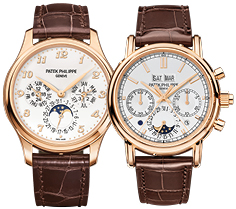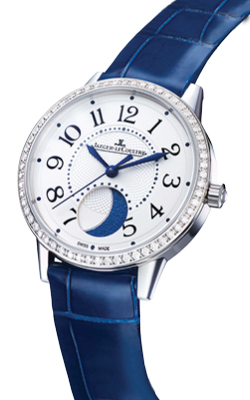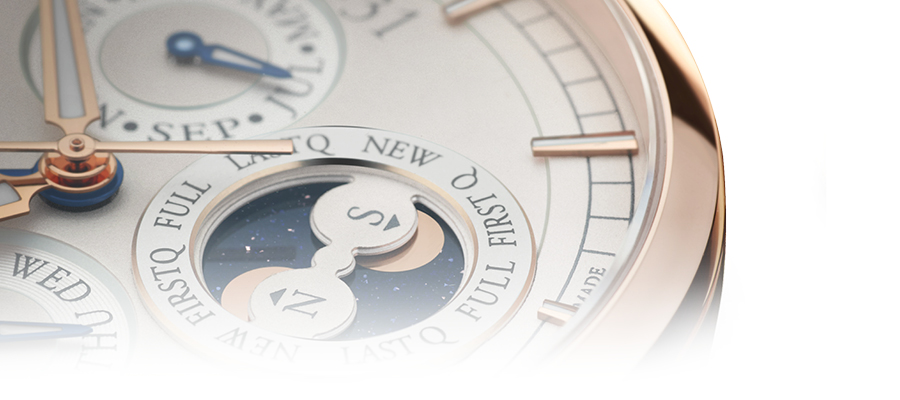Lunar Love

The Magic Of A Moon Phase Watch
Since humankind has existed, the night sky has always captured our imagination. The cloak of darkness illuminated by a giant glowing orb, further accompanied by millions of tiny twinkling lights, has inspired countless artistic endeavors and fanciful tales. Even though we now know what these illuminations overhead are and have even sent men to take steps on the lunar surface, the captivating beauty of the moon and stars continues to fuel our sense of wonder and creativity. For centuries, watchmakers have been especially taken by the waxing and waning of the moon, which has paved the way for the moon phase watch complication.
A CELESTIAL COMPLICATION

With its distinguished charm, the moon phase aperture remains an aesthetic fixture in Patek Philippe’s perpetual calendar watches.
A “complication” is any watch function that goes beyond telling the time. One of the most poetic and whimsical watch complications is the moon phase display. While we may take for granted what the moon looks like in the sky on any given night, many high-end watchmakers make it their mission to paint a precise picture of it on a watch dial.
To portray the current phase of the moon on a timepiece, watchmakers include a moon phase display on the dial of a watch. The most frequent type of moon phase display features a semi-circular window, where the edges of the opening serve to cover parts of the moon to illustrate the correct phase. Although this is the standard way for a watch to show the phases of the moon, there are other styles too, including full circular windows with markers pointing to the current phase or ones that take into consideration northern and southern hemispheres.
Parmigiani’s Tonda Calendrier Annuel features a precision moon phase mechanism that only needs adjustment once every 122 years.
ASTRONOMICAL AESTHETICS

This Rendez-Vous showcases a large moon phase display with a sand- blasted moon disk that imparts an attractive sense of depth.
Depicting the expansive night sky as beautifully as possible on a small watch dial provides the opportunity for fine watch brands to exhibit their artistic flair and boundless ingenuity. Oftentimes, solid gold pieces are shaped to emulate the moon, regularly joined by tiny twinkling stars. Blankets of blue or black backgrounds are thoughtfully dotted with either whimsical illustrations of the moon or realistic representations of the lunar landscape. The celestial canvas can also be fashioned from alluring materials such as glistening aventurine or mysterious meteorite that once fell from space. Oftentimes, high end watch brands tap into the skills of their most creative artisans—from jewelers to engravers to enamellers to painters—to recreate the magic of the moon.
Mechanically, recreating the stages of the moon’s silhouette is not as simple as it may seem. Since a full lunar cycle takes 29.53 days (29 days, 12 hours, and 44 minutes) to complete rather than over a nice round number, it presents a challenge for watchmakers to build a precise moon phase display. Depending on what a timepiece is looking to achieve in terms of precision, a moon phase display can remain accurate for a few years, or a few hundred years, before needing manual adjustment on the part of the wearer.
While nothing can beat the wonder of looking up and seeing the bright white moon gleaming in the dark night sky, looking down at one’s wrist to see a realistic representation of the heavens comes pretty close.




